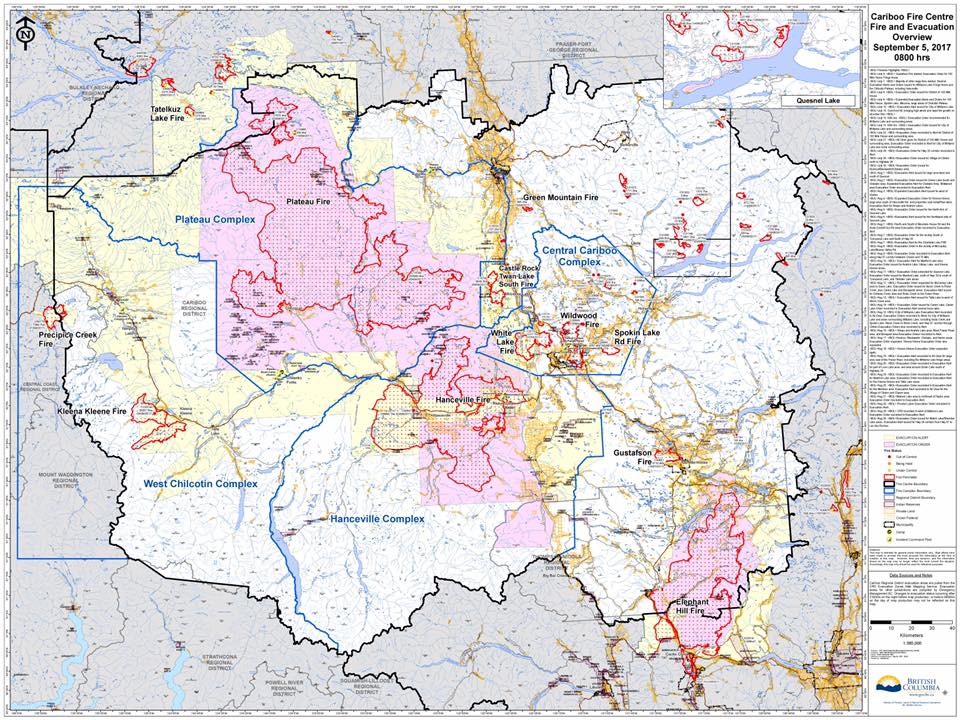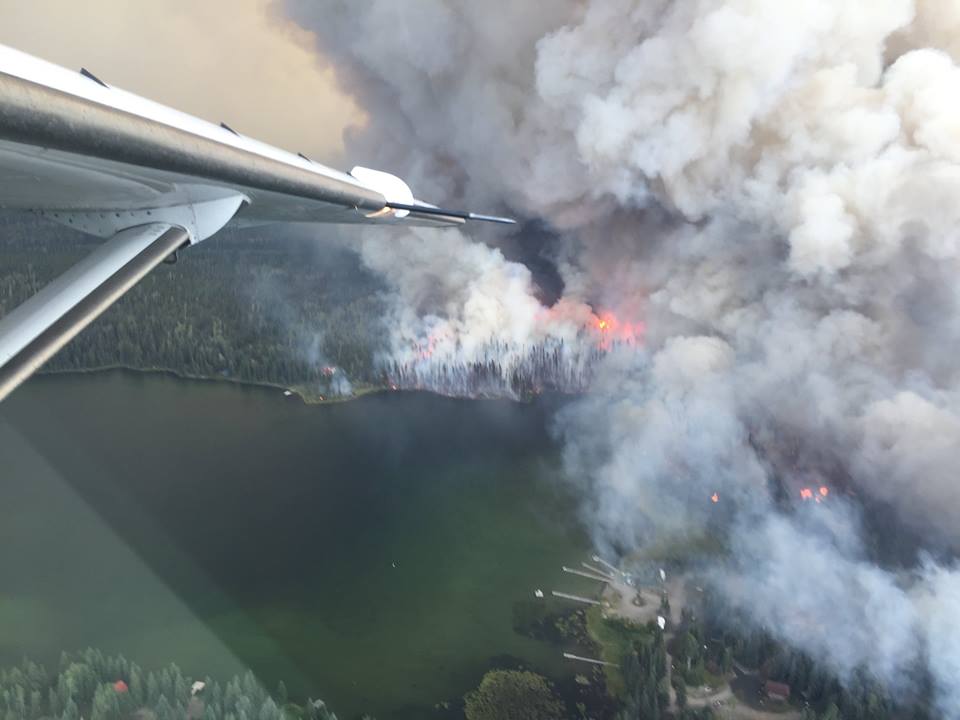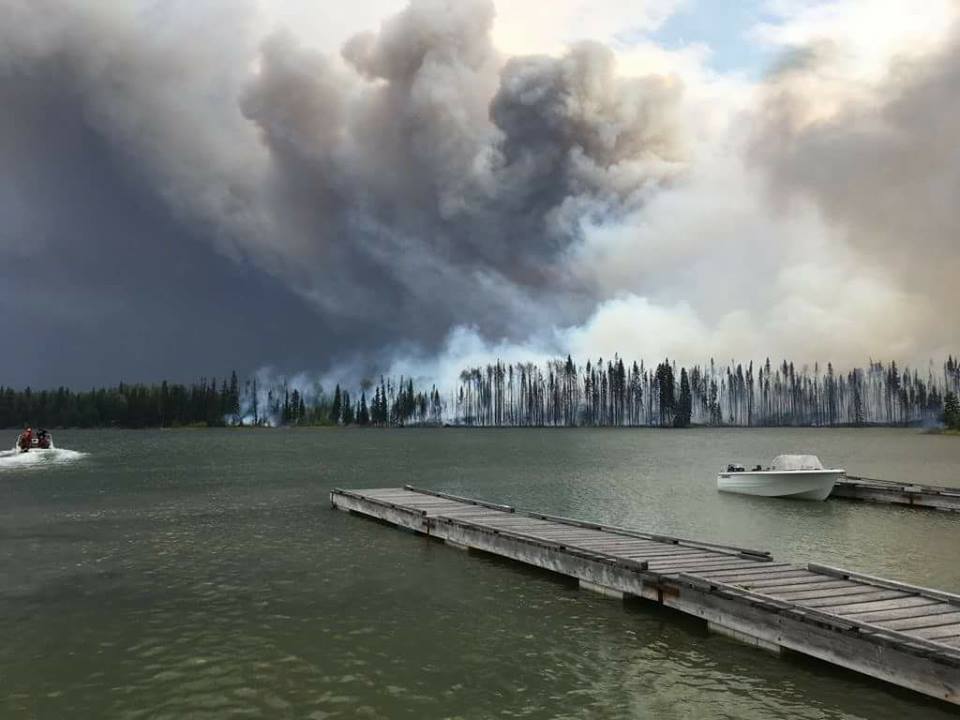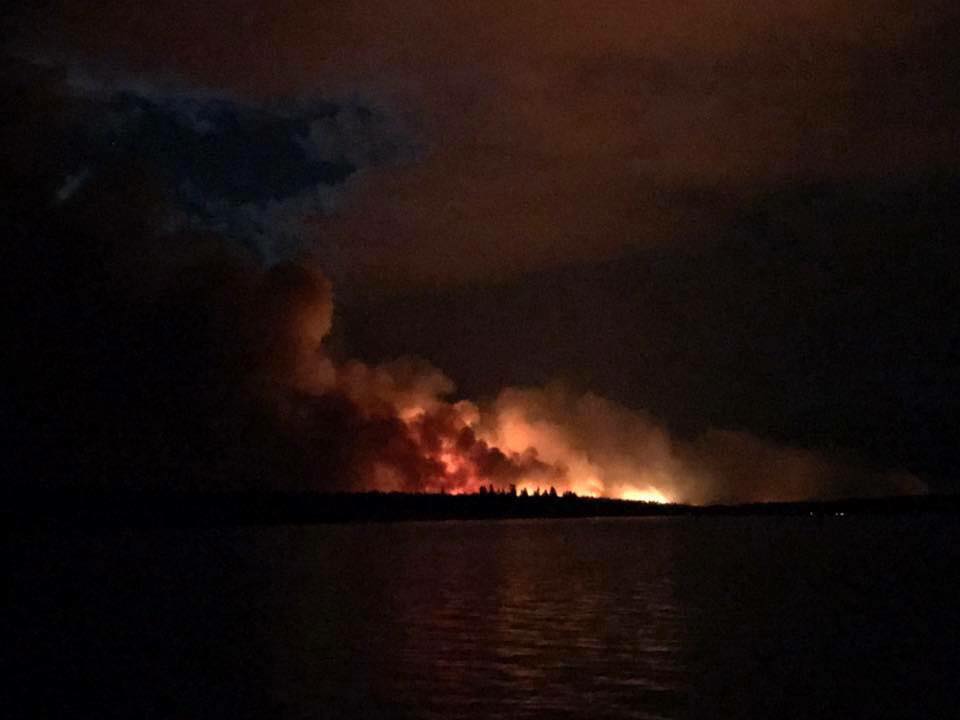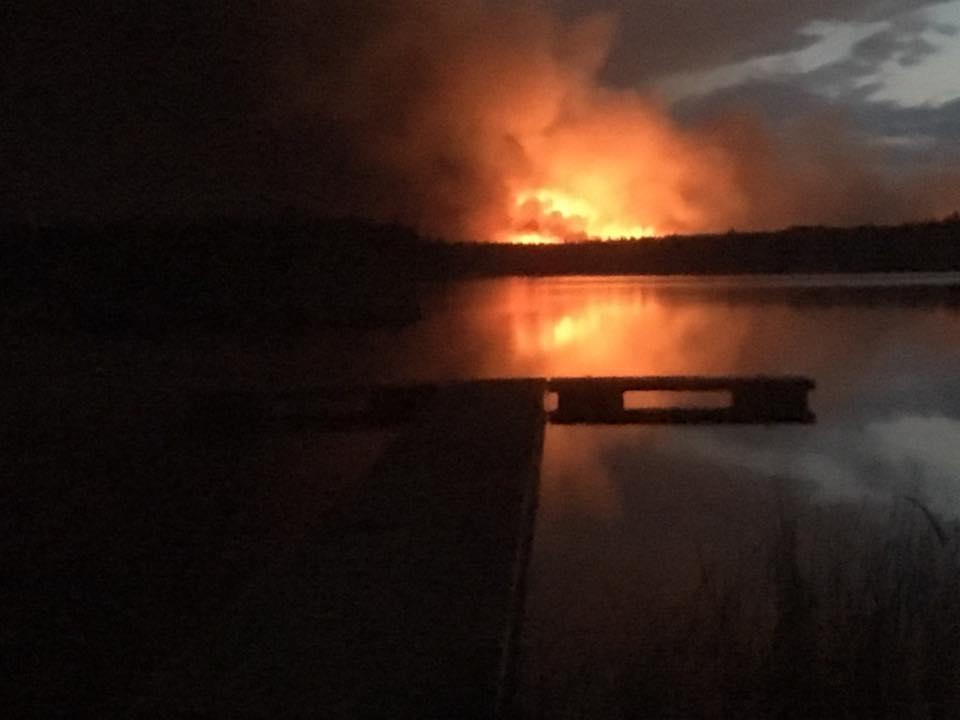Blog 6 – Cariboo Chilcoltin Wildfire Update
11 septembre 2017 17:13 Laisser vos pensées
This wildfire season has now been dubbed the worst in British Columbia’s history. The Cariboo region has been heavily hit and we are not out of the proverbial “woods” yet.
The Elephant Hill fire which began in Ashcroft and burnt through to Loon Lake and up onto the Cariboo Plateau near Green Lake and is now burning near Sheridan Lake, has grown to 186,800 ha. It remains 50% contained. Crews, heavy equipment, and structural protection specialists are working with 24 hour coverage in critical places along the fire’s north flank to best protect life, property, and infrastructure. There are vast resources being thrown at this fire including 534 firefighters, 18 helicopters, 100 heavy equipment and 125 Structural fire fighters working around properties.
The Plateau Fire which is west of Williams Lake and Quesnel is 517,140 ha and still has zero containment. The Hanceville Fire is 239,657ha in size and is 50% contained.
A municipal leader in British Columbia’s central Interior has predicted that these wildfires, which have now chewed through more than 10,600 square kilometres of woodland won’t be fully out until 2018.
“It goes down deep into the roots sometimes and then pops up again in the summer,” he said. “That’s not unusual, so I think the forest service felt we will be out dealing with these fires until well into October. And we will probably be back with many hot spots again come spring.”
The cost of fighting these fires is high (currently $400 Million and rising) and the economic loss as a result creates further challenges for communities whose livelihoods are so closely connected to these forests.
However, healthy forests require disturbance. Disturbance refers to “any discrete event that disrupts forest ecosystem, community, or population structure and/or function”. Disturbance can be biotic, created by insects like the Mountain Pine Beetle, or abiotic, created by fire or wind. Believe it or not insects actually have a much greater impact than fire. The term “forest health” has in many cases been misused as it can easily be connected to powerful personal imagery. A human interpretation of forest health depends on management objectives for that particular forest but “forest health” needs to be defined without any human expectations.
A working definition of forest health is as follows “Forest ecosystems are healthy when their underlying ecological processes operate within a natural range of variability, so that on any temporal or spatial scale, they are dynamic and resilient to disturbance.”
Aggressive fire prevention has contributed to the situation that we are now facing. In a time before humans aggressively fought wildfires, they’d burn until rains extinguished the flames, temperatures dropped or they reached areas without the trees or dry fuels that allowed it to travel. That meant a regular cycle of fire kept fuel loads in check naturally, resulting in mostly low burning, low temperature fires.
But humans have interrupted that natural cleaning process by aggressively fighting fires over the past decades. Over time, without the cleansing action of fire, wildlands build unnatural fuel loads. Historically, First Nations people used to burn vast areas of forest in order to manage forest ecosystems for the long term and rejuvenate the ability to produce useful plants and medicines. When these overcrowded wildlands eventually burn, the result is unnatural fire behavior, which can result in catastrophic outcomes. It’s time that we recognize that the greatest opportunity humans have to curtail severe fire behavior is by addressing that buildup of trees, underbrush and grasses. However, the fuel load that has been created as a result of the Mountain Pine Beetle is widespread throughout British Columbia and the task of clearing this brush would be challenging and expensive.
Since 2003, the province of B.C has spent $313 Million dollars on activities that reduce wildfire risk, but is it enough? We are now having wildfires with severe consequences. In comparison, earthquake preparation has received billions of dollars in funding for something that may happen in your lifetime. Wildfires are something that happen every summer.

